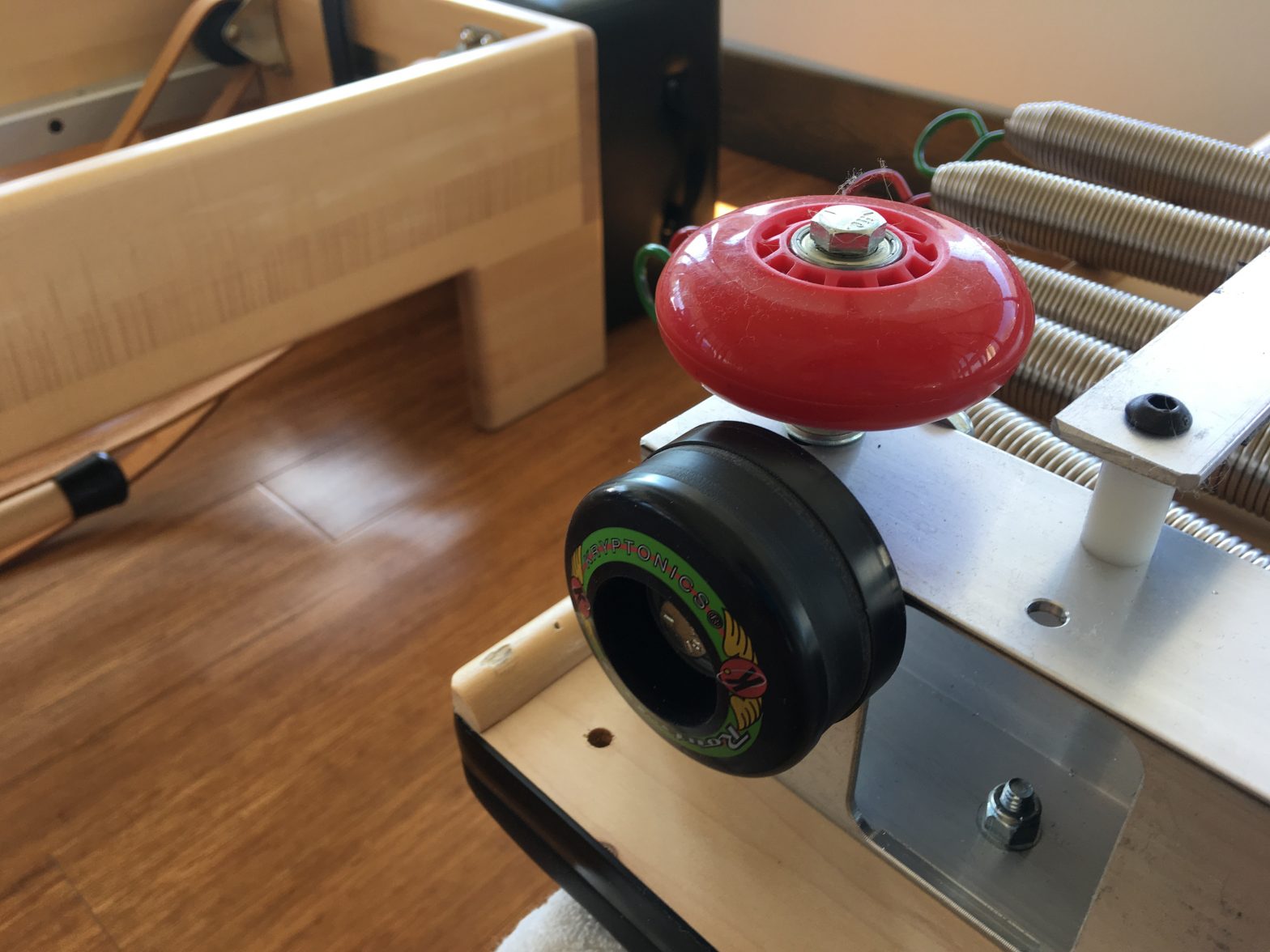

How your carriage rides on the rails is one of the most noticeable things about your Reformer and one of the most critical to getting the intended feeling of an exercise.
Not only is the condition of the outer rubber wheel important, but the metal part that surrounds the axle bolt, as well. That metal part (it looks like a donut), can be either a bushing or a bearing.
Bushings
Classical leaning machines, such as the Contrology Reformer and the Centerline Reformer, use bushings on their wheels. Bushings are simply a round metal donut that fits between the rubber or plastic wheel and the metal axle bolt. It can be made of different materials, such as steel, bronze, or high-grade plastic like Nylon. The material chosen depends on what kind of friction properties you want (Translation: how you want it to feel/the drag) and what kind of wear properties you want (Translation: whether you want to oil or maintain the surfaces that rub on one another.)
Bearings
Contemporary leaning machines, such as the Studio Reformer, Allegro and Allegro 2 Reformers, and the Rialto Reformer, use wheels with bearings. Bearings are also donut shaped, however, they have a few layers because inside of the donut are a bunch of tiny steel balls and lubricant. This allows for a much silkier ride than bushings, with hardly any drag. You can find these types of bearings on roller skates or inline skates.
Which is better?
Despite very different designs and “feels” neither one is technically superior. They just provide different experiences on the Reformer. If you want to try one out to feel the difference, check local studios and see if you can take a session with an instructor there (what a great way to cross-train, build your local network, and make more Pilates friends!) Or, you can come to one of the many Pilates on Tour conferences and try out many different pieces of Balanced Body equipment. I’ll be there answering all your equipment-related questions!
Maintenance and Care
Balanced Body does not require regular maintenance for the bushings or bearings specifically, however, I recommend keeping the surfaces of your wheels and rails clean. This prevents hair, dust, dirt, and little rubber flecks from any padding you use from migrating into the bushings or bearings where they will start to cause problems (see the gross photos below!) If you can keep your machine clean, the wheels can last decades. To read more about cleaning your rails, click here.
Psst! This post also appeared over on Balanced Body’s blog.




